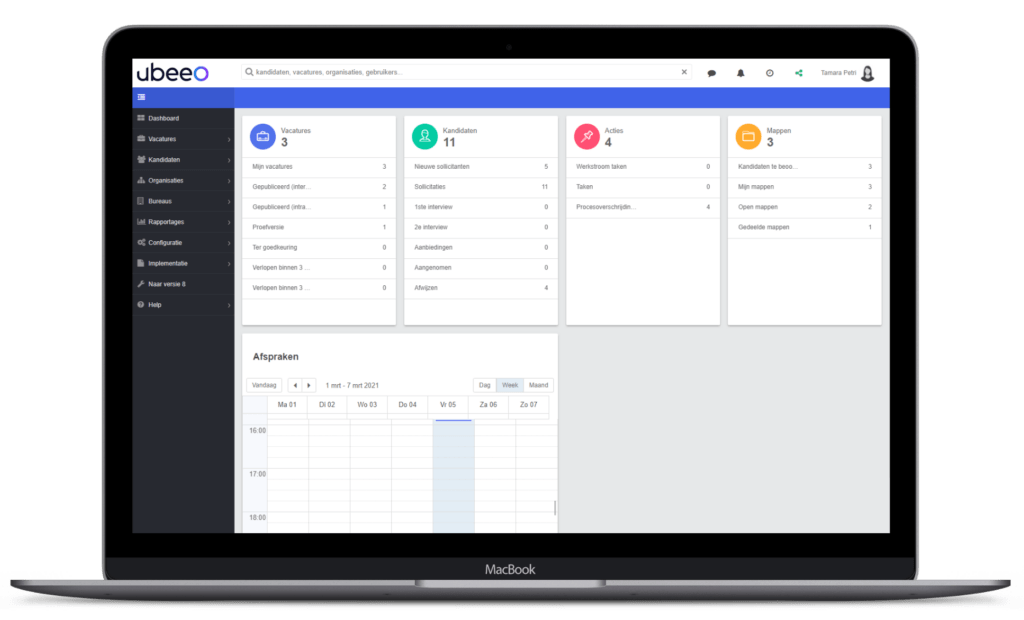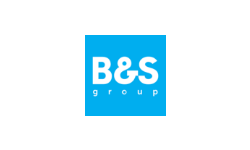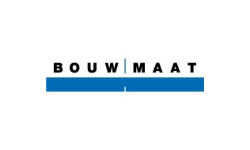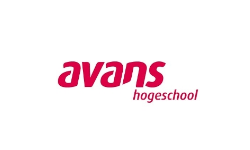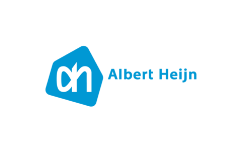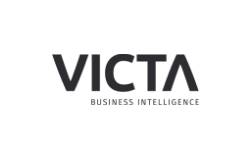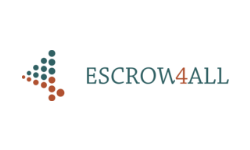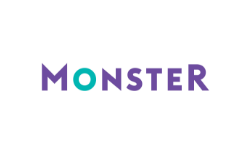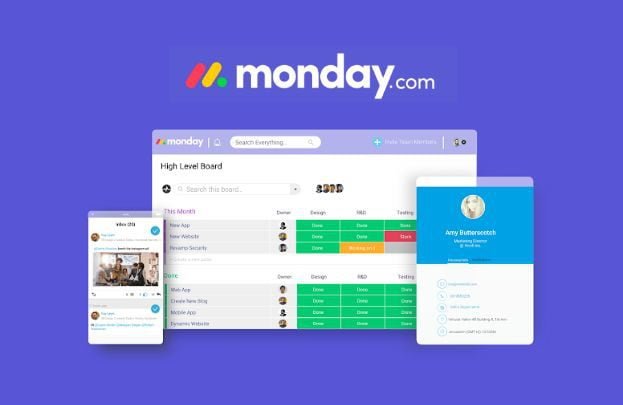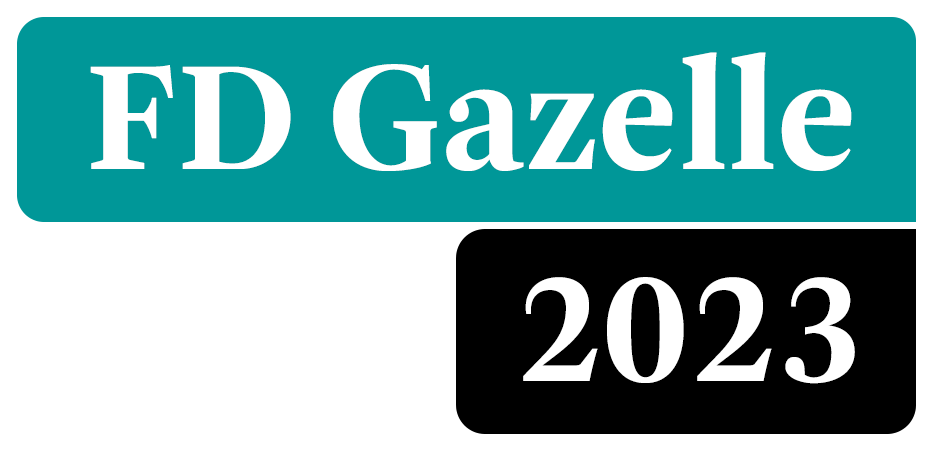Implementing a new ATS: it’s drastic, intensive and therefore a complicated process, right? Calling it easy would be oversimplifying things, but with the right approach and planning, it is possible to get this done without unnecessary speedbumps and setbacks.
We did that for the ROC Amsterdam, for example, where we worked with a driven and well-prepared project team. This paid off by way of a successful collaboration, which was great for both sides. Read more about this in this article.
Very important for proper ATS implementation is solid preparation. Then we use 7 steps, dividing the implementation into various stages.
Good preparation
A (likely) demo and brief explanation by Ubeeo has demonstrated who we are, what we do and what the building blocks of our product are. Preparation for actual implementation therefore begins with a kick-off meeting, in which we prefer to have everyone who will be working with the product at the table right away. For example:
- ICT Department
- Job Market Communication
- Recruitment or the human resources department
- Web developer or internal contact
- Project Manager
A diverse team guarantees reduces the risk of any unwanted surprise coming to light after the kick-off that were previously overlooked. For example, you want to avoid a Security Officer suggesting a day before the final launch that a PEN test was never done.
Before preparation, make sure that it is well understood what is impossible to do now, what should be done, and what benefits and processes it should provide. And communicate those requirements internally, so that both the strategic decision makers and everyone who needs to start providing input are on the same page.
Implementation of the ATS in 7 steps
We implement our ATS in 7 clear steps. We plan, design, build, test, commission, finalise and provide the necessary support. And where typical consultants develop all kinds of fancy models and labels for that, we like to keep it simple and on-point. And if we have to, we call it the JBF method. An expression we only share with our inner-core clients, if they’re curious of course.
We go through the 7 steps in Monday, which we think is the best tool for teamwork. We set up the platform based on everything we discuss during the kick-off. The dashboard makes it clear at a glance who is working on what, what still needs to be done and what has been completed.
1. Plan
No successful implementation without a clear plan. It’s an important phase, where, of course, we sign the contract and plan the project. Next comes the kick-off meeting, preferably with a diverse team around the table.
2. Design
What follows is the design phase. We start with the business requirements as they follow from the kick-off meeting. Based on the requirements, we mark off the plan and design the solutions that are going to be included.
Together with the customer, we determine what is needed to get the internal processes into the system. This is also the time when we think about integrated solutions that need to be included. You can think of links to a testing agency, the website, the intranet and, for example, job posters for transferring job vacancies.
3. Construction
Next is the construction phase. We install the software based on the priorities and requirements the emerged in the kick-off meeting. In addition, we start with the designed solution(s) as discussed during the previous step.
We build the actual solution, taking care of the back office. In addition, we build the integrated solutions as well as the careersite, ready to use soon.
During this phase, we set up the system and prepare it for the testing phase. Where possible, testing will begin for parts that are finished, while we continue to build the subsequent parts.
4. Test
Once the components have been built, we start the testing phase. We test both the separately built components and then also the integral system as it should work. Finally, we do an acceptance test, followed by a sign-off moment to proceed to the next step.
The testing phase also includes training for our customers. In 3 hours we explain all the ins and outs of the system and point out useful features and important settings. Meanwhile, the client makes a plan for good internal communication, to clearly indicate what is going to change in the way they work.
Making the changes clear, the advances the system offers and explaining how employees will work with it is especially important. We have experience with this, although it is the customer themselves who ultimately have to pick this up in order to create sufficient support. Without proper support, implementation often proves more difficult in practice.
5. Commissioning
Commissioning is the actual launch of the ATS. It is an exciting and important step during the implementation, where we find out if what we have built and tested does what the customer expects in practice.
We always do the launch on a Tuesday. We do this deliberately, because Mondays are less convenient. There are times when last-minute arrangements need to be made. That works fine on a Monday before Tuesday, but it’s more difficult on a Sunday before Monday.
In addition, after the system is commissioned, we ask for an evaluation by the client. We operate fully ISO 9001-certified, so as part of the processes we collect feedback on the implementation of the ATS. Of course we address any feedback, and get very excited about anything that makes the client happy.
6. Final step
After launch, we end the project by finalising what we have built, tested and put into use. We add the finishing touches where needed and explain how support works.
7. Support
Finally, our support is available for any questions, technical challenges and uncertainties left after the training. Meanwhile, we provide a smooth transition from the intensive contact during implementation to the support phase.
We work with support tickets, which we pick up promptly and assign the right specialist personally. In the last few conversations and contact moments, we explain how the support will work, to make sure the customer knows exactly how we can be reached.
How long will the implementation take?
The implementation of an ATS takes a standard 13 weeks with us. That seems long, but practice shows that the period is over faster than you might think. This way, the client has space to rewrite internal emails, take pictures and take care of other important matters.
In addition, there’s some time left over for any setbacks or extras that do turn out to be on the wish-list. And would the customer rather take longer? It is possible to agree on a phase 1 in 13 weeks, allowing more time for the subsequent parts. This way, we avoid any open-endedness, where the end date would eventually get pushed back.
Want to know more about implementing our ATS or how to be properly prepared? Contact us, we would love to hear from you.




